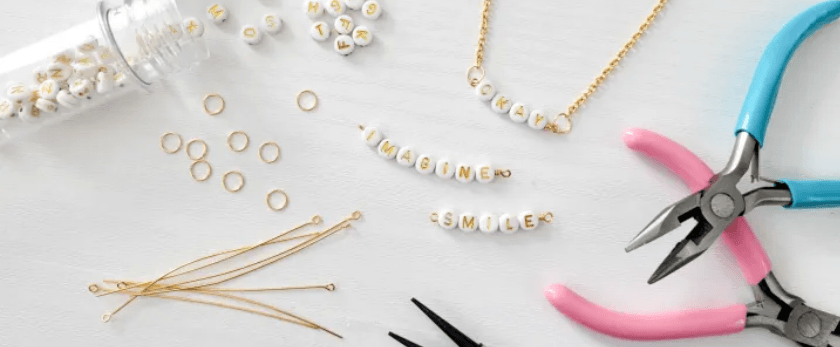Are you tired of buying expensive and environmentally harmful necklaces? Do you want to make a positive impact on the planet while still looking fashionable? Look no further than homemade necklaces! Not only are they a fun and creative way to express your personal style, but they also have a much lower impact on the environment compared to store-bought options. In this article, we will discuss why store-bought necklaces are bad for the environment, the benefits of making your own, and provide step-by-step instructions on how to make your own eco-friendly necklaces.
Why Store-Bought Necklaces are Bad for the Environment
-
Use of Non-Renewable Resources: Most store-bought necklaces are made from materials such as gold, silver, and gemstones, which are all non-renewable resources. The extraction of these materials often involves destructive mining practices that can harm the environment and local communities.
-
Carbon Footprint: The production and transportation of store-bought necklaces contribute to greenhouse gas emissions, which contribute to climate change. The longer the supply chain, the higher the carbon footprint of the product.
-
Chemicals and Toxins: Many store-bought necklaces are made with chemicals and toxins that can be harmful to both the environment and human health. These chemicals can leach into the soil and water, polluting the environment and potentially causing health issues for those who come into contact with them.
-
Packaging Waste: Store-bought necklaces often come in excessive and unnecessary packaging, which contributes to the growing problem of plastic pollution. This packaging often ends up in landfills or the ocean, where it can take hundreds of years to decompose.

Why Making Your Own is Better for the Environment
-
Use of Sustainable Materials: When you make your own necklaces, you have control over the materials you use. You can opt for sustainable and eco-friendly materials such as recycled metals, natural fibers, and organic beads. These materials have a lower impact on the environment and can be easily sourced from local or online suppliers.
-
Reduced Carbon Footprint: By making your own necklaces, you eliminate the need for transportation and reduce the carbon footprint of your jewelry. You can also choose to use materials that are locally sourced, further reducing the carbon footprint of your necklace.
-
No Harmful Chemicals: When you make your own necklaces, you have control over the materials and chemicals used. You can choose to use natural and non-toxic materials, reducing the risk of harm to the environment and your health.
-
Minimal Packaging: Homemade necklaces often require minimal packaging, reducing the amount of waste produced. You can also choose to use eco-friendly packaging materials such as recycled paper or reusable cloth bags.
What You Will Need
- Sustainable materials such as recycled metals, natural fibers, and organic beads
- Basic jewelry-making tools such as pliers, wire cutters, and crimping tools
- Optional: Beading board, jewelry glue, and clasps
- Creativity and imagination!
Directions
-
Choose Your Materials: The first step in making your own necklace is to choose the materials you want to use. You can opt for recycled metals, natural fibers, or organic beads. You can also mix and match different materials to create a unique and personalized necklace.
-
Plan Your Design: Before you start making your necklace, it's helpful to plan out your design. You can use a beading board to lay out your materials and see how they will look together. This will also help you determine the length of your necklace and where to place the clasps.
-
Start Stringing: Once you have your design planned out, it's time to start stringing your materials. You can use a variety of techniques such as knotting, wire wrapping, or crimping to secure your materials in place. Be sure to leave enough room at the ends for the clasps.
-
Add the Clasps: Once you have finished stringing your materials, it's time to add the clasps. You can use a variety of clasps such as lobster clasps, toggle clasps, or magnetic clasps. These can be easily attached using pliers.
-
Optional: Add Finishing Touches: If you want to add some extra flair to your necklace, you can use jewelry glue to add small charms or pendants. You can also use jump rings to attach multiple strands of beads together for a layered look.
-
Wear and Enjoy: Once your necklace is complete, it's time to wear and enjoy your creation! Not only will you have a unique and stylish piece of jewelry, but you can also feel good knowing that you made it in an environmentally friendly way.
Conclusion
Homemade necklaces are a great way to express your personal style while also making a positive impact on the environment. By using sustainable materials and reducing the carbon footprint of your jewelry, you can help create a more sustainable future. So next time you're in need of a new necklace, skip the store and make your own! Your wallet and the planet will thank you.









